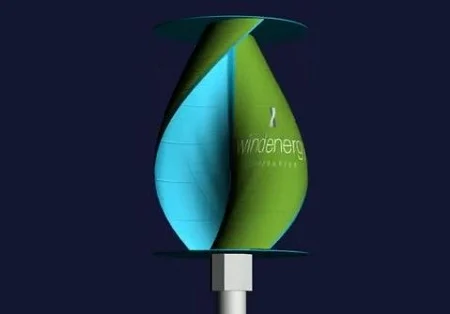“Every commercial building can power itself,” Elizabethtown, Ky.-based Wind Energy recently proclaimed on its website.
And yes, the company thinks wind is the way to do it, using its new WindSail turbine, engineered with help from Segway-developer Dean Kamen’s DEKA Research. And unlike Kamen’s seemingly fanciful inflatable wind turbine, Wind Energy is actually ready to bring its product to market.

Wind Energy describes the device as a “drag-based” turbine – with its spiraling, upright “sails” grabbing the wind and being pushed into rotation.
“As it turns, energy is transferred from the sail surface to the central shaft in the form of torque,” the company said.
“Since it has a relatively large surface area, the result is quite impressive, even in light winds.”
Like all vertical-axis turbines, the WindSail also has the advantage of not needing to be pointed to face the wind. As Wind Energy put it, “The turbine is always facing into the wind.”
Other benefits the company cites: It’s quiet, bird-friendly and looks dang sharp, able to be customized with company “logos, graphics and colors.”
There’s good reason to explore the possibilities with vertical turbines: A recent study by researchers from Caltech suggested that shorter vertical-axis turbines, placed in a tight array with each turbine turning in an opposite direction to its neighbors, can be at least 10 times as efficient as horizontal turbines.
And Wind Energy is hardly the only player in this emerging field: Sauer Energy in September launched WindCharger, a three-blade turbine manufactured from UV-protected lightweight composite, resin and plastic that is designed to be integrated unobtrusively into existing residential and small commercial buildings.
Like the WindSail, the WindCharger is said to generate power well at low wind velocities.






